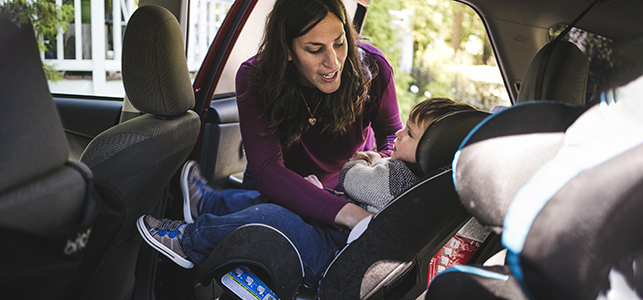Determining if your car seat meets U.S. safety standards
With the rise in online retailers, there’s been a significant increase in sales of counterfeit and non-compliant car seats. Counterfeit seats are made with flimsy and unsafe materials, while non-compliant seats may be approved in other countries but don’t meet U.S. safety standards and aren’t legal for use here.
“It can be hard to tell the difference between an approved car seat and one that doesn’t meet standards to be considered safe, but there are some key indicators you can look for,” said Corri Miller-Hobbs, RN, program coordinator for Safe Kids Virginia. “A properly used and installed child safety seat can reduce the risk of injury by as much as 71 percent, so this is a very important topic for parents and caregivers.”
Look for the following indicators that are required for car seats to be considered safe in the U.S.
- A permanent sticker that states the seat meets Federal Motor Vehicle Safety Standard (FMVSS) 213
- A label with manufacturer name, contact information with U.S. phone number and date of manufacture
- Maximum and minimum height and weight requirements listed on the seat in English Imperial units (pounds/lbs. or inches) AND metric units (kilograms/kg or centimeters)
- Registration card included with seat to be mailed in for warranty/recall information
- Printed manual/directions included with seat
Red flags that may signal an unsafe car seat
If you notice any of the following, it’s a good idea to investigate further.
- Poor overall quality, stitching errors in fabric, etc.
- No chest clip or five-point harness
- Labels with little information or only pictures
- Grammatical or spelling errors on labels or in manual/directions
- Non-U.S. contact phone number
- Foreign compliance stickers (may indicate the seat is not approved in the U.S.)
Counterfeit and non-compliant seats are often sold on lesser-known websites, or even through third party vendors on reputable sites.
Does more expensive mean safer when it comes to car seats?
Counterfeit car seats aren’t always cheap! The good news is that you don’t have to break the bank to get a safe car seat for your child. Look for the indicators above – rather than the price tag – when selecting the best seat for your little one.
What to do if you have concerns about the safety of your child’s car seat
If you spot a red flag, or don’t see the proper safety signs on your child’s car seat:
- Stop using the seat
- Return it if you can
- Buy another seat or borrow one that has not been in a crash from someone you trust
- Report the seat using the following links:
National Highway Traffic Safety Administration
Consumer Product Safety Commission
U.S. Department of Commerce
Want to make sure your child’s seat is approved and installed just right? The National Highway Traffic Safety Administration has a tool to help locate a car seat inspection station near you.

